A 45.52-carat deep-blue gemstone from India, the Hope Diamond is one of the world's most beautiful gems — but is it also cursed?
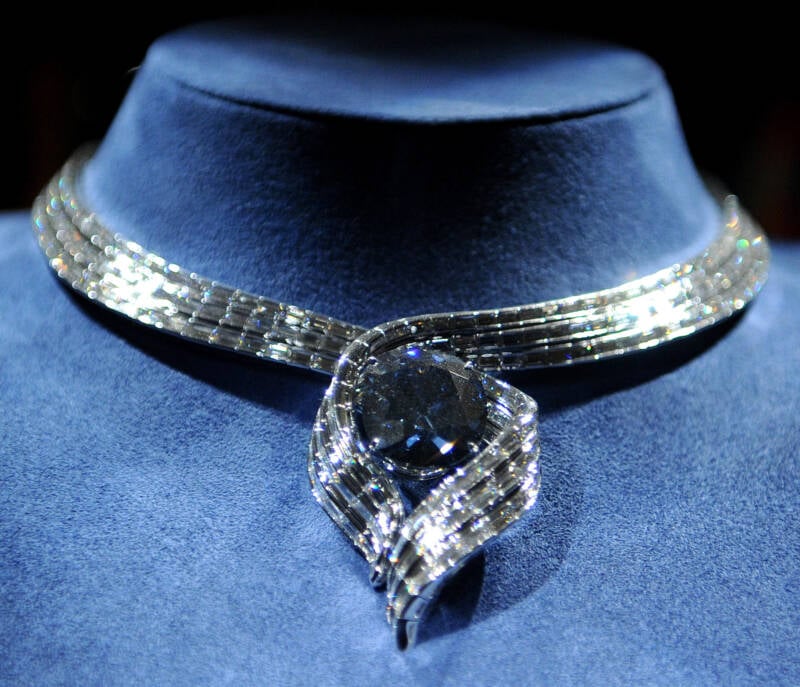
UPI/Alamy Stock PhotoThe Hope Diamond on display at the Smithsonian’s Museum of Natural History in Washington, D.C. 2011.
The Hope Diamond is not named because it inspires hope. Instead, the famous gemstone was named after a British gem collector. And the diamond itself has a tumultuous history full of death, tragedy, and loss.
From the moment it was acquired under murky circumstances in 17th-century India, the Hope Diamond has often been linked to terrible luck. The now-45.52-carat gem has belonged to kings, jewelers, and socialites, and most of them suffered misfortune after acquiring the gem.
So is the Hope Diamond cursed? Below, discover the history of one of the most famous diamonds in the world, from its mysterious origins, to the bad luck it allegedly caused for some of its owners, to where it is today.
The Origins Of The Hope Diamond — And The First Tragedies That Surrounded It
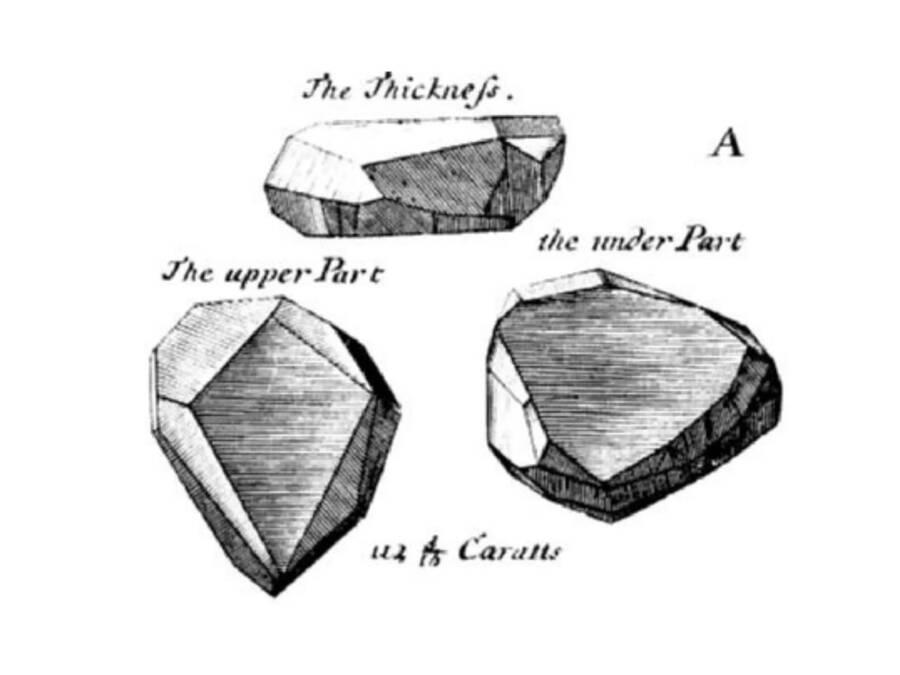
Public DomainJean-Baptiste Tavernier’s sketch of the Hope Diamond, which was originally called Tavernier Blue.
The Hope Diamond first entered the historical record by 1666, when the then-112-carat gem was acquired in India by a French gem merchant named Jean-Baptiste Tavernier. Tavernier had made multiple trips to Asia, but it’s unclear exactly how he got his hands on the Hope Diamond, which he called Tavernier Blue. One legend states that Tavernier plucked the diamond from the eye of a statue of the Hindu goddess Sita. When local religious leaders discovered this, they purportedly set a curse on the thief.
Though some versions of this Hope Diamond legend claim that Tavernier promptly died, the merchant actually lived into his 80s. Tavernier did face some difficulty in his life due to his Protestantism, but he seemed to have escaped the worst of the Hope Diamond’s alleged curse.
Future owners, however, were not so lucky.
Before his death, Tavernier sold the diamond to King Louis XIV of France. The king had the precious gemstone cut down to about 67 carats, and it soon became known as the “Blue Diamond of the Crown” or the “French Blue.” After the king died, it then passed on to his heirs. From there, Louis XV had the stone reset into a piece of ceremonial jewelry for the Order of the Golden Fleece before passing the diamond on to Louis XVI.
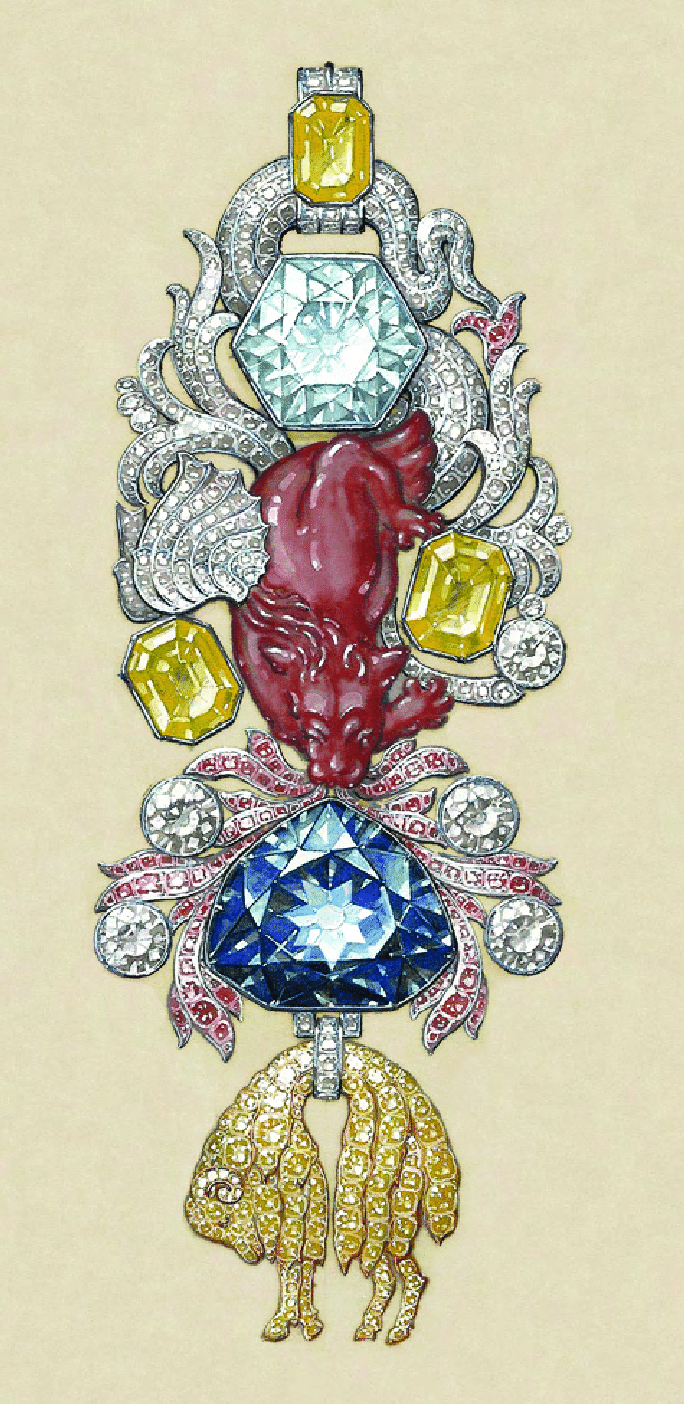
Francois Farges/Wikimedia CommonsLouis XV had the Hope Diamond set into a piece of ceremonial jewelry for the Order of the Golden Fleece.
If the Hope Diamond was cursed, it was Louis XVI and his wife Marie Antoinette who suffered the most from its supposedly evil enchantments. During the French Revolution, both were deposed. Louis XVI was guillotined in January 1793, and Marie Antoinette was guillotined later that October.
By that point, the Hope Diamond had gone missing. But it didn’t stay lost for long. And those who encountered it over the following centuries often regretted ever crossing paths with the blue gemstone.
The Financial Difficulties Of Those Who Owned The “Perfect” Diamond
About 20 years after it vanished in Paris, the Hope Diamond made its way to London, where it was documented by jeweler John Francillon. In 1812, Francillon sketched the diamond (now recut) and wrote: “It is beauty full and all perfection without specks or flaws, and the color even and perfect all over the Diamond… it is as finely cut as I have ever seen in a Diamond.”
From there, it was seemingly acquired by King George IV. Though the British Royal Family has no record of such a jewel in their archives, George IV appeared to wear the Hope Diamond in his 1821 coronation portrait.
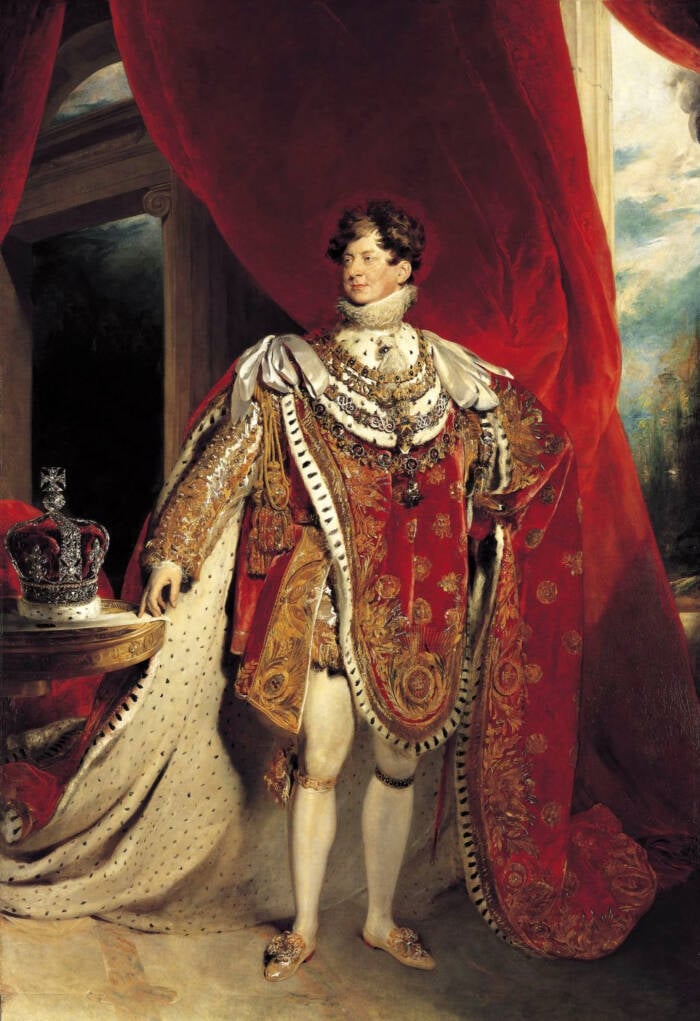
Public DomainA portrait of King George IV by Thomas Lawrence, in which the British royal appears to be wearing the Hope Diamond.
However, if George IV did own the Hope Diamond, it didn’t stay with the British royals for long. Since George IV was burdened by enormous debts until his death in 1830, the diamond was seemingly sold to British banker and gem collector Henry Philip Hope by 1839. Hope did not explain when or how he acquired the diamond, but it did come to take his name — and the diamond stayed in the Hope family for the rest of the 19th century.
The gemstone eventually fell into the hands of Lord Francis Hope and his wife, a former showgirl named May Yohé. However, misfortune followed the couple. Lord Francis Hope fell into extreme debt, Yohé left him for another man, and Hope was forced to sell the diamond in 1901.
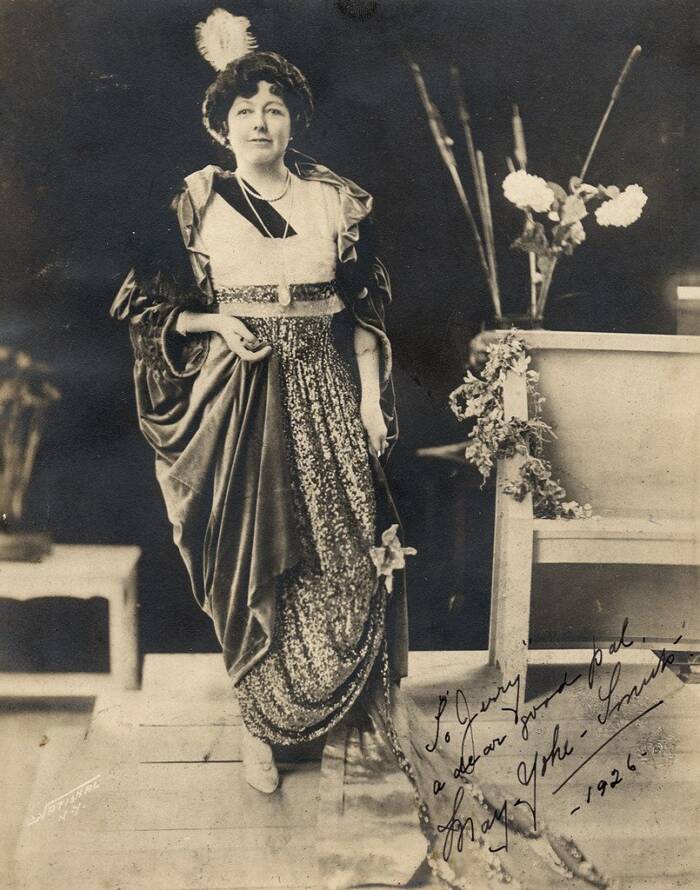
Public DomainMay Yohé in 1921, posing with what appears to be a replica of the Hope Diamond.
The diamond was purchased by London-based diamond merchant Adolf Weil, who in turn sold the precious gemstone to Joseph Frankel’s Sons & Co. Then, Simon Frankel brought the diamond to New York City, but had trouble finding a buyer for it as his own company teetered on the edge of bankruptcy. It was then purchased by Turkish diamond collector Selim Habib, whose own financial difficulties also forced him to sell the diamond.
After being purchased by jeweler C.N. Rosenau, the Hope Diamond was then bought by Cartier in 1910. At first, Cartier also struggled to sell the diamond. Though rumors abounded that the precious blue gemstone was cursed, it was eventually purchased by American heiress Evalyn Walsh McLean.
Is The Hope Diamond Cursed? Inside The Story Of Its Final Owner
While reporting on McLean’s purchase of the Hope Diamond, The New York Times published a sensational article about the diamond’s history.
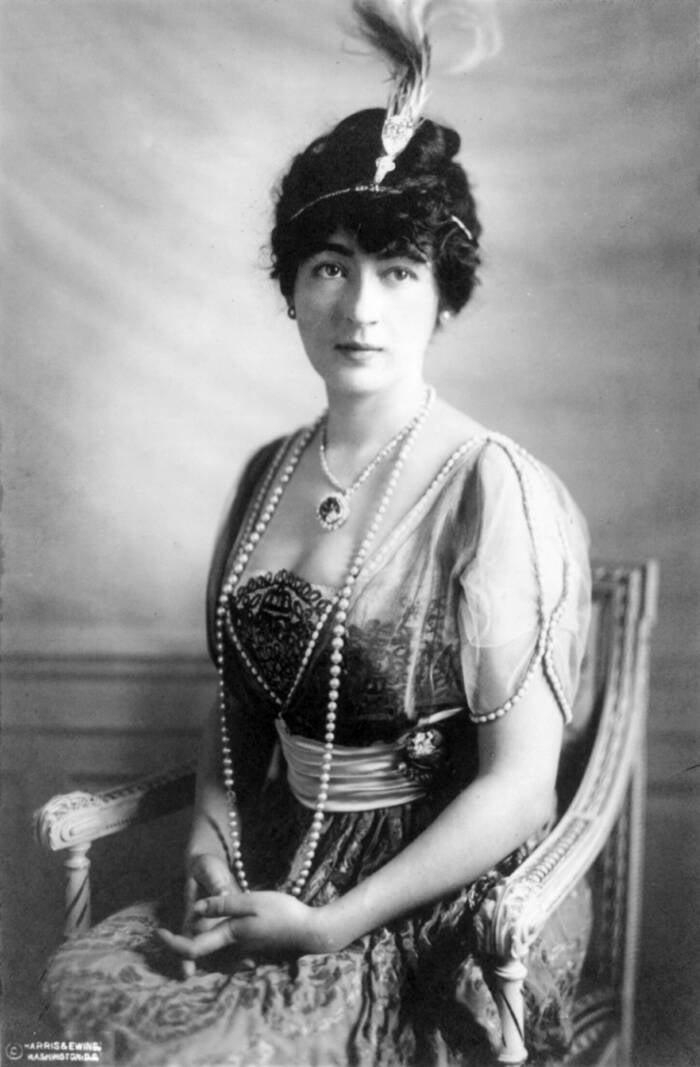
Library of CongressEvalyn Walsh McLean appears to be wearing the Hope Diamond in this 1914 photo.
“Among the stories of ill-fortune attendant upon the ownership of the Hope Diamond is one to the effect that Jacques Colet, who purchased it from Simon Frankel, went mad and committed suicide. Prince Ivan Kanitovski, who had it after Colet, was killed by Russian revolutionists, and Mlle. Ladue, to whom he had loaned it, was murdered by her sweetheart. Simon Maoncharides, who sold it to Sultan Abdul Hamid, was thrown from [a] precipice not long afterward,” the newspaper reported in 1911.
Though most of these stories couldn’t be verified — the paper also erroneously reported that Tavernier had been “torn to pieces by wild dogs” — rumors that the Hope Diamond was cursed had given Evalyn Walsh McLean pause. Even May Yohé had reportedly warned her against it. But instead of returning the diamond, McLean decided to take it to a church to have it blessed. During the ceremony, as the diamond awaited its blessing, the church was reportedly suddenly rattled by a fierce thunderstorm nearby.
But McLean wasn’t deterred.
“Ever since that day,” she quipped, “I’ve worn my diamond as a charm.”
Though McLean didn’t believe in the curse and happily owned the diamond all her life — often wearing it at parties — she did suffer a string of extraordinary bad luck. Before she died from pneumonia in 1947, McLean suffered through the death of her nine-year-old son, who was hit by a car, the heavy drinking, infidelity, and eventual insanity of her husband, Ned, and the tragic death of her daughter from a drug overdose.
McLean’s estate sold the jewel to Harry Winston, who donated it to the Smithsonian Institution in 1958. Today, the diamond is on display at the Smithsonian’s National Museum of Natural History in Washington, D.C.
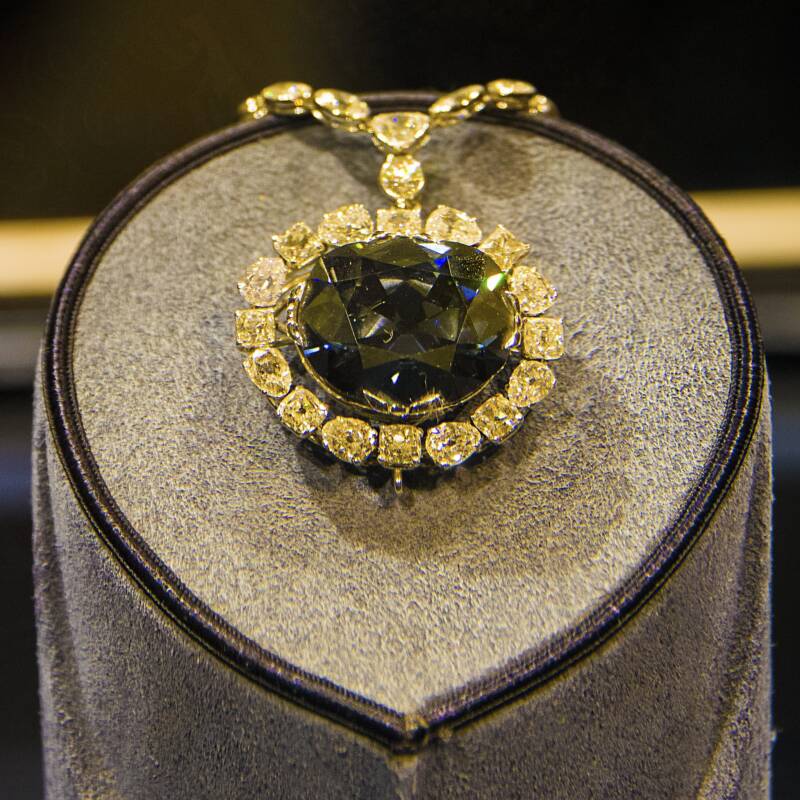
Mbalotia/Wikimedia CommonsThe Hope Diamond on display at the National Museum of Natural History in Washington, D.C.
It’s been estimated that the diamond is worth $350 million, but the Smithsonian says the gem is “not for sale.” And that might be for the best.
So is the Hope Diamond cursed? Perhaps. Or perhaps beautiful, expensive things are always haunted by a specter of misfortune.
After reading about the history of the Hope Diamond, the spectacular — but possibly cursed — gemstone, go inside the controversial history of the Koh-i-Noor diamond, which is part of England’s Crown Jewels. Or, discover the creepy stories behind these purportedly haunted paintings.





